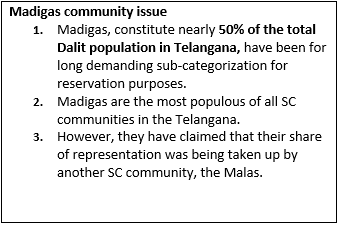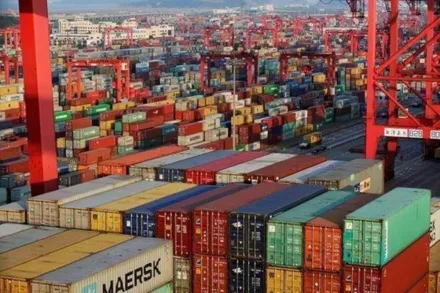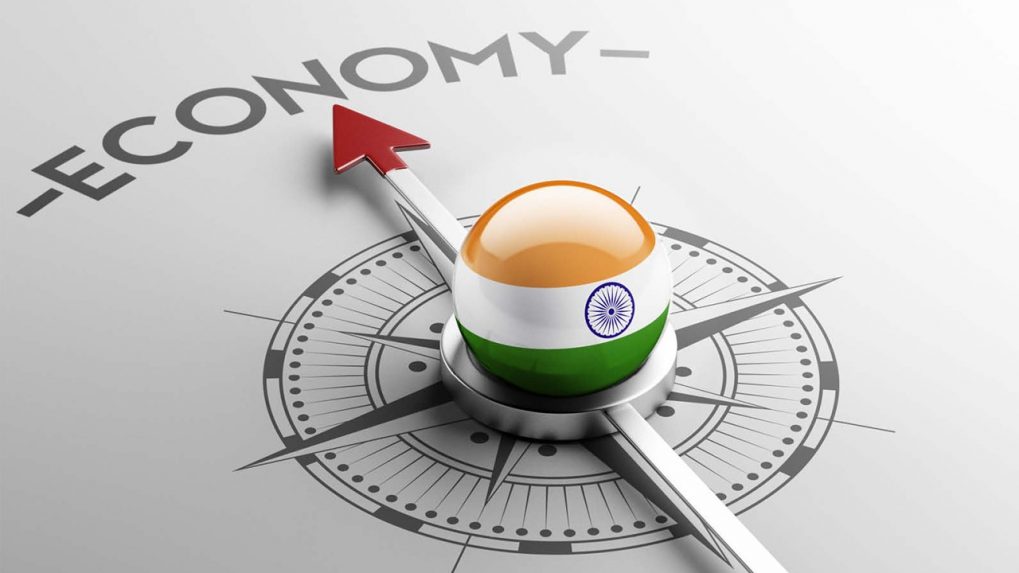- Courses
- GS Full Course 1 Year
- GS Full Course 2 Year
- GS Full Course 3 Year
- GS Full Course Till Selection
- Answer Alpha: Mains 2025 Mentorship
- MEP (Mains Enrichment Programme) Data, Facts
- Essay Target – 150+ Marks
- Online Program
- GS Recorded Course
- Polity
- Geography
- Economy
- Ancient, Medieval and Art & Culture AMAC
- Modern India, Post Independence & World History
- Environment
- Governance
- Science & Technology
- International Relations and Internal Security
- Disaster Management
- Ethics
- NCERT Current Affairs
- Indian Society and Social Issue
- NCERT- Science and Technology
- NCERT - Geography
- NCERT - Ancient History
- NCERT- World History
- NCERT Modern History
- CSAT
- 5 LAYERED ARJUNA Mentorship
- Public Administration Optional
- ABOUT US
- OUR TOPPERS
- TEST SERIES
- FREE STUDY MATERIAL
- VIDEOS
- CONTACT US
Sub-Categorization Within Castes
Sub-Categorization Within Castes
Context
Prime Minister Narendra Modi pledged to explore sub-categorization of Scheduled Castes (SCs) during an election rally in Telangana. This issue was raised by the Madiga community.
Meaning of Sub-categorization
|
Why there is need of Sub categorization?
- Diversity within SC, ST, and OBC Categories: Significant diversity and heterogeneity exist within the Scheduled Castes (SC), Scheduled Tribes (ST), and Other Backward Classes (OBC) categories.
- Disproportionate Representation: Within the SC, ST, and OBC categories, some sub-groups have garnered a significant portion of the benefits, leading to inequalities among the communities.
- Demand for Sub-categorization: Various sub-groups within SC, ST, and OBC categories, including the Madigas in Telangana, Paswans in Bihar, and Jatavs in Uttar Pradesh, are advocating for sub-categorization.
- Ensuring Social Justice: Sub-categorization is seen as a mechanism to rectify imbalances and promote social justice within these marginalized communities.
Legal Status of Sub-categorization
- State’s attempts: Multiple States, including Punjab, Bihar, and Tamil Nadu, have attempted State-level reservation laws for sub-categorization, facing legal challenges.
- Supreme Court Judgement:
- E. V. Chinnaiah v State of Andhra Pradesh (2004) :Supreme Court judgment stated that unilateral sub-categorization by States is not within their power, as only Parliament can make and notify SC/ST lists.
- Davinder Singh case(2020): In a 2020 judgment related to Punjab's attempt at sub-categorization, a five-judge Bench suggested that deciding on benefits within the existing SC/ST lists might be permissible for States and suggested a larger constitutional bench rule on the matter.
- Article 16(4) : Article 16(4) of the Constitution already allows States to create special laws for under-represented backward classes.
Formation of Committee by Union Government
- The Union government has constituted a five-member committee of Secretaries, chaired by the Cabinet Secretary.
- Objective: Evaluate and devise a method for the equitable distribution of benefits, schemes, and initiatives among the over 1,200 Scheduled Castes (SCs) in India.
Arguments and Counterarguments
Arguments for Sub-categorization |
Counterarguments |
|
|
Challenges and solution in implementation of Sub-categorization
SNO |
Challenges in Implementation |
Solutions |
|
1 |
Establishing precise criteria for sub-categorization, considering factors like education, income, and social status, can be challenging. |
Form a committee comprising experts, community representatives, and policymakers to collaboratively define transparent and fair criteria. |
|
2 |
Dominant sub-groups within SCs may resist sub-categorization, fearing a potential shift in reservation benefits. |
Conduct awareness campaigns and dialogue sessions to address concerns, emphasizing the objective of equitable representation for all sub-groups. |
|
3 |
Gathering accurate data on the socio-economic status of different SC sub-groups for fair sub-categorization is a complex task. |
Invest in comprehensive surveys, involve social scientists, and leverage technology for accurate data collection and verification. |
|
4 |
Constitutional implications and potential legal challenges may arise, as seen in previous court cases. |
Seek legal expertise to draft a framework that aligns with constitutional provisions and anticipates potential legal hurdles. |
|
5 |
Sub-categorization may risk creating divisions within the SC community, impacting its unity. |
Foster dialogue and inclusivity; highlight that the goal is to address disparities and ensure fair representation without weakening overall unity. |
|
6 |
Political considerations and opposition may hinder the smooth implementation of sub-categorization. |
Engage with political stakeholders, build consensus, and demonstrate the positive impact of sub-categorization on social justice and representation. |
Conclusion
The issue of sub-categorization remains a subject of ongoing dialogue, involving community leaders, policymakers, and legal experts. A holistic approach is essential in crafting policies that ensure representation and benefits are distributed equitably among diverse sub-groups within SC, ST, and OBC categories.



